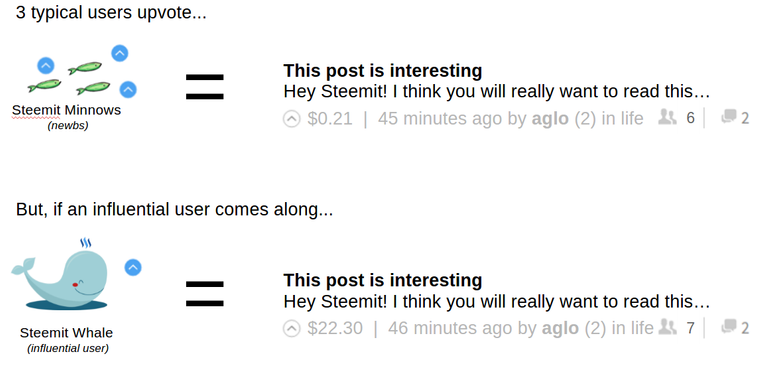For those who have skimmed the Steem white paper, you know how daunting it can be. After sifting through it myself, I thought an ELI5 might be helpful for new users or those who haven't had time to give it a thorough read. This will be part 1 of a multi-part series. If the Steemit community is interested, I’ll write up the remaining sections over the coming days.
A couple housekeeping items. I’m using the same header names as the white paper so you have an easy reference point if you want additional detail. I've included as many pictures and diagrams as possible as I'm hoping this can serve as a white paper for dummies. Please call me out on anything I’ve written that is incorrect. I’m still learning about Steem as well!
Let’s get to it...
Introduction
“A social media platform is nothing without its users. These users should be directly compensated for the value of their contributions.” -- a wise Steemian

The Steem founders realized there is a flaw in many social media platforms today - users provide all the content, but facebook/reddit/etc. receive all the money through advertisements. Think of all the time you spend writing and replying to facebook posts, reading reddit, liking/upvoting your favorite comments. This is all free labor for them. The more time you spend on their site, the more they can charge advertisers.
Traditional Social Media

What if there was a way to get compensated directly for your social media time and effort? This is the Steem model, where users are paid based on their contributions to the platform. The more value you provide, the more income ($$) you receive for your efforts. Contributions include all interactions with Steemit, not just posting content. So every upvote and every comment also receives some amount of income.
Steem Model

Recognizing Contribution
Sounds great, but how do we fairly score contributions so users are paid appropriately? Steemit’s approach is to pay based on # of upvotes and influence of users who upvoted.

Confused yet? I was too, but it’s pretty simple when you step back and look at a concrete example.
Let’s say we have the following Steemit post:

Our sample post has 3 upvotes, which has generated $0.15. This will be split among the poster (aglo) and the contributors (3 users who upvoted).
In a traditional model (facebook / reddit), one user = one vote. Therefore, if 3 more users upvote my sample post, it would look like:

6 upvotes and no income for my time or my fellow upvoters time. Even if I’ve created the best cat meme of all time, I would need many, many upvotes to reach the front page of Steemit. Also, there isn’t much incentive for users to upvote my post (hard to find buried on page 100+, no direct compensation, etc).
In the steem model, I can generate a dramatically different income depending on which users upvote my post. If influential users upvote my post, I could reach the front page very quickly and earn $1,000s in income with relatively view upvotes. If users with little influence upvote my post, I may not receive any benefit. So, upvotes are great, but high quality upvotes really drive income on Steemit.

“Our influential users have the most invested in Steemit and are therefore the best estimate of good vs. bad content.” -- another wise Steemian
As you can imagine, it pays to gain influence on Steemit (literally!). But what drives influence? Well, put simply, you gain influence by contributing to the Steemit community. You can create content, fuel discussion, help filter content or participate in the general stability of the network (mining, liquidity - topics for another post). As your influence grows, so does your payout.
So, how exactly does this "payout" process work? When do I get my money and where does it come from? These are topics for part 2 of our ELI5 - Ways to Contribute. Hope you enjoyed part 1. Comments and feedback welcome!
Just found this gem. I can't believe it hasn't gotten more attention. I have looked in a lot of places for a Steem ELI5, but this is the best. Thank you!
this is kinda cool. I'd be interested in your mining/witness(?) overview